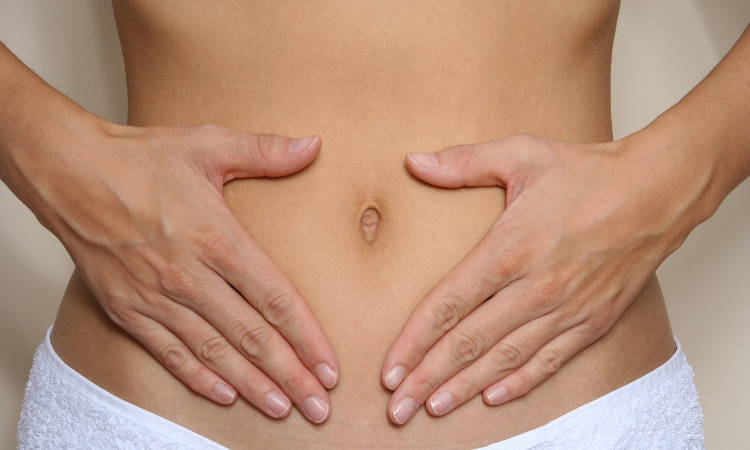The microbiota, a microscopic ecosystem that inhabits our bodies, attracts a lot of interest due to its significant impact on our overall health. From the gut to the skin, this vast array of microorganisms plays a vital role that goes far beyond what was traditionally thought.
But what exactly is the microbiota? In this post we’ll tell you in detail about it, its key functions, making focus on the skin microbiome, and how we can keep it in balance to promote healthy, radiant skin.

What is the microbiota?
Microbiota, also known as microbial flora, refers to the community of microorganisms, mainly bacteria, that coexist in different parts of the human and animal body, including the gut, mouth, skin and other organs.
This diverse and dynamic population adapts to its specific environment and plays an essential role in digestion, the immunological system, vitamin synthesis and protection against pathogens. In addition, said microorganisms coexist in a symbiotic relationship with the human host, playing vital roles in overall health and well-being.
What are its functions?
The microbiota has multiple essential functions in the human body that impact our health. Some of the most prominent include:
Digestion & Metabolism
The intestinal microbiota helps in the breakdown of foods that the human body cannot digest on its own, facilitating the absorption of nutrients and the production of vitamins such as K and B vitamins.
Immunological System
The microbiota microorganisms train and modulate the immunological system, helping to prevent infections and autoimmune diseases. The microbiota acts as a protective barrier against pathogens.
Pathogen Protection
The microbiota competes with harmful microorganisms for space and nutrients, producing antimicrobial substances that inhibit the growth of pathogens.
Mood Regulation
There is a connection known as the gut-brain axis, where the gut microbiota influences the production of neurotransmitters, affecting both mood and behavior.
Vitamin and fatty acid production
The microbiota synthesizes K and B vitamins, as well as short-chain fatty acids that benefit intestinal health.
What is the skin microbiome?
The skin, the largest organ of the human body, also hosts a diverse and unique microbiota that plays a crucial role in its health and appearance. This microbial community is distributed in various areas of the skin, influenced by factors such as moisture, pH and environmental exposure.
Examples of skin microbiome
- Staphylococcus epidermidis
This is one of the most common microbes on human skin. It acts as a first line of defense against pathogens, producing compounds that inhibit the growth of harmful bacteria.
- Cutibacterium acnes
Although mainly associated with acne, under normal conditions this bacterium helps to maintain the pH of the skin and protect it from other pathogenic microorganisms.
- Malassezia
A genus of yeast-like fungi that inhabits the skin and scalp. In balance, it helps protect the skin, but its overgrowth can cause conditions such as seborrheic dermatitis.
How to take care of skin microbiome
Proper care of the skin microbiome is essential to maintaining healthy, resilient skin. Here are some tips to promote its optimal balance:
- Proper hygiene
Proper hygiene is very important, but it is as important not to overdo it. Excessive use of antibacterial products and harsh soaps can kill beneficial bacteria along with harmful ones.
- Moisturizing
Keeping the skin moisturized helps to preserve the balance of the microbiome. The use of appropriate moisturizers can support the natural skin barrier.
- Avoid harsh chemicals
Products with harsh ingredients such as sulfates and parabens can alter the skin’s microbiome. Opt for mild and natural products.
- Balanced nutrition
A diet rich in nutrients, including probiotics and prebiotics, can support skin health from the inside out.
- Sunscreen
Sun damage can alter the skin microbiome. Use sunscreen to protect your skin from UV rays.
- Avoid stress
Stress can negatively affect the skin microbiome. Practices such as meditation and regular exercise can help maintain a proper balance.
How to restore the skin microbiome
In case the skin microbiome has become unbalanced, there are several strategies to restore it:
Topical probiotics use
Products containing probiotics can help restore the skin’s natural microbiome. These products reintroduce beneficial bacteria to the skin surface.
Diet rich in prebiotics and probiotics
Consuming foods such as yogurt, kefir, sauerkraut and fiber-rich ones can help balance the microbiome from within.
Avoid unnecessary antibiotics
Antibiotics can kill both good and bad bacteria. Use them only when absolutely necessary to help preserve the microbiome.
Natural treatments
Natural ingredients such as aloe vera, honey, and coconut oil can contribute to the recovery of the skin and its microbiome.
Dermatological check-ups
In cases of severe imbalances, it is advisable to consult a dermatologist for specialized treatments.
MKARE®️ can help you
At Arandovo, we understand the importance of a healthy skin microbiome for the body. That is why, thanks to our functional ingredient MKARE®️, you can achieve healthy skin.
MKARE®️ is a 100% natural supplement that natively contains collagen, elastin, hyaluronic acid and over 400 proteins that promote the well-being of the skin while also helping to protect the skin barrier. On the other hand, our ingredient is free of chemicals and has a membrane purity of 90%, making it a perfect complement not only for the skin, but also for hair and nails.
If you are looking for a natural supplement to complement your daily diet, MKARE®️ is the solution. Check out our website now and discover the different applications and uses, as well as all of its features. If you have any questions, feel free to get in touch with us, we will be happy to help you.
Remember, taking care of your microbiota means taking care of your health. Make your skin well-being a priority with MKARE®️!




